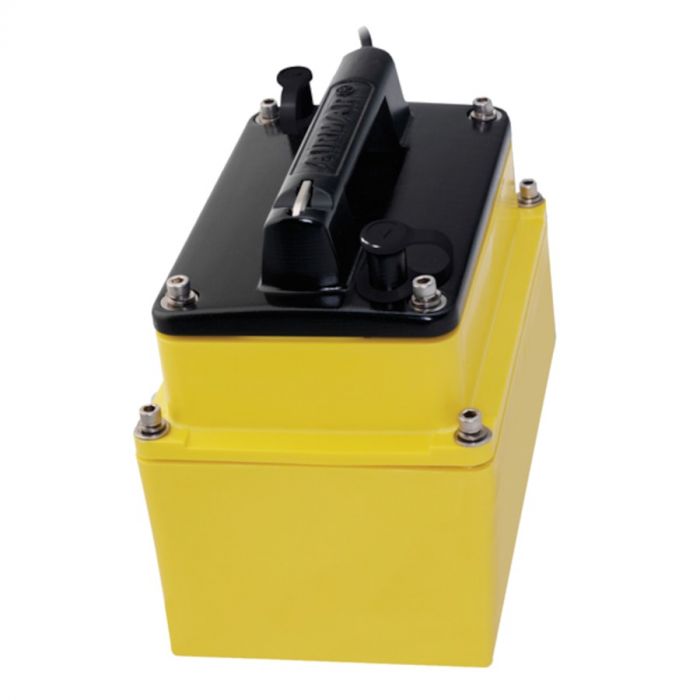Airmar M265C Depth Only Low Medium In-Hull Transducer with Navico 9-Pin Y-Cable – 1m Mix–N-Match Cable
Model: M265C-LM-9N2
- Depth only
- 1 kW of power for great, deep to mid-depth performance
- Low frequency: 42 kHz to 65 kHz
- Medium frequency: 85 kHz to 135 kHz
- 73 kHz of total bandwidth from one transducer
- Covers popular fishing frequencies of 50, 88, and 107 kHz plus everything else in the bandwidths
- Plastic transducer housing and mounting tank
- Patented Xducer ID® technology
The M265LM Chirp-ready in hull is a perfect mid to deep-depth transducer. The huge bandwidth includes many of the most popular frequencies for targeting top gamefish. This 1 kW powerhouse delivers clear target details, bottom discrimination, as well as bait and game-fish separation at all depths.
The low-frequency band of 42 to 65 kHz provides deep-water performance down to 914 m (3000′).It is a good choice when scouting an area or fishing in deeper depths. The medium-frequency band, operating between 85 and 135 kHz, is excellent for identifying targets suspended close to the bottom on structure and within the water column.
The transducer is installed in the included tank which is cut to the boat’s deadrise angle and affixed inside the hull. When the transducer is placed inside the tank, it is properly oriented for optimal performance. The M265LM is a popular choice for customers not wanting to drill a hole in their hull and for trailered or lifted boats.
Specifications
| Acoustic Window |
Urethane |
| Cable-Length |
9 m (30′) |
| Connector |
Airmar 12-Pin (MMC) |
| Deadrise Range |
0° to 22° |
| Display Connector |
Navico 9-Pin Y-Cable – 1m Mix-n-Match Cable |
| Frequency Band |
Low-Medium |
| Housing Material |
Plastic |
| Hull Material |
Solid fiberglass only |
| Low Frequency |
42-65 kHz |
| Low Frequency Beamwidth |
25°-16° |
| Max Deadrise |
Accommodates a deadrise angle up to 30° with the longest side of the tank installed parallel to the centerline (keel) of the hull |
| Max Depth |
Low frequency- 914 m (3000′), Medium frequency- 457 m (1500′) |
| Max Vessel LOA |
11 m (36′) and above |
| Medium Frequency |
85-135 kHz |
| Medium Frequency Beamwidth |
16°-11° |
| Mounting Style |
In-Hull |
| Power Rating |
1 kW |
| Single or Dual Frequency |
CHIRP-Ready Dual-Band |
| Transducer Functions |
Depth |
| Dimensions |
8.19in H x 8.71in L x 6.02in W |
What’s in the Box:
- M265C-LM-MM
- Navico 9-Pin Y-Cable – 1m Mix-n-Match Cable



Reviews
Clear filtersThere are no reviews yet.